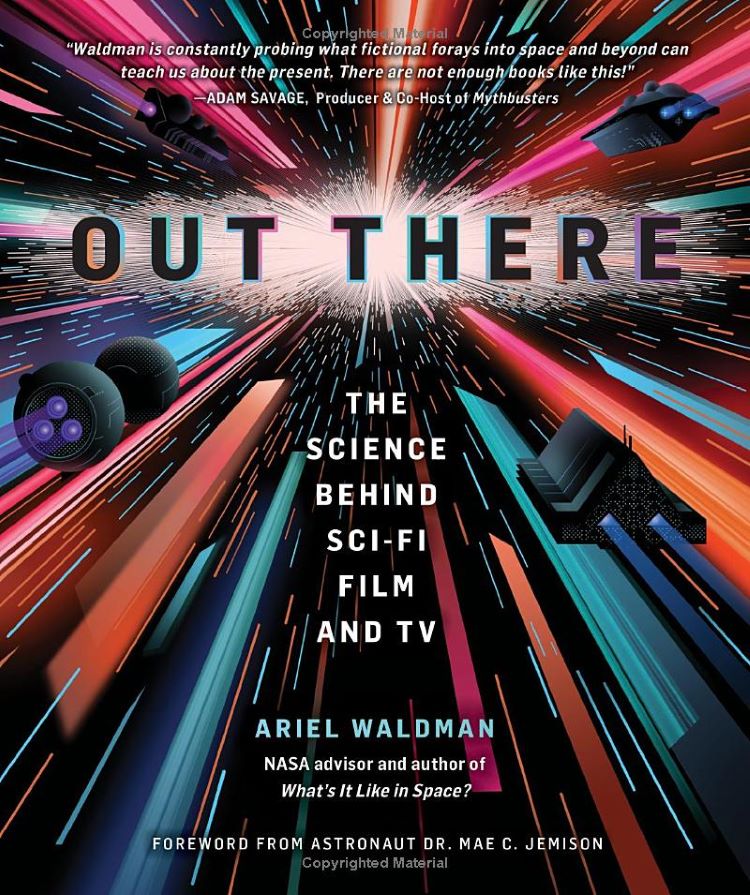
Science fiction is a genre that has predicted many current inventions. And yet, at the time of release, certain movies and television shows never expected their scripted innovations would become reality. Just look at the Star Trek franchise’s use of video communication and think of all the ways we interact now via Zoom and other platforms.
But there are still many questions that linger on the facts behind the science fiction. And that’s where this fantastic new book, Out There: The Science Behind Sci-Fi Film and TV, comes into play. Ariel Waldman, who served as a NASA advisor during the Obama presidency, interviews a wide array of people ranging from scientists, astronomers, law professors, and researchers who are not only specialists in their fields but also have a keen interest in what science fiction portrays and the possibility of it becoming reality.
Waldman has a different topic for each chapter of the book and talks to different people for each one to get their perspective on the likelihood of certain things becoming a reality. While the mainstream media has a lot of focus currently on artificial intelligence, Waldman’s book goes beyond just discussing that and other heavily discussed theories that have been popularized by films such as the Terminator franchise, Star Trek, and Star Wars.
One chapter focuses on cloning, which was a popular story when it happened to a sheep named Dolly back in the 1990s but hasn’t really had much discussion in recent years. Waldman goes over some of the ideas as seen in Duncan Jones’ Moon and the hit Apple TV+ series Foundation, both of which give off the idea that cloning may be something more accessible than we imagined. While the cloning of animals has proven to be successful, some cases have shown a high amount of disabilities and stillbirths – which, as one person states in the book, would not be acceptable if those same issues happened to humans.
The current discussion of Elon Musk taking a team to Mars is another hot button talking point. But plenty of movies have shown that the worlds that have been developed on Mars have not been quite as pleasant as one would expect. Certain titles such as Starship Troopers, Total Recall, and The Expanse show Mars being heavily militarized. This chapter has a great discussion with two authors, one of whom was also successful in developing a language for the television shows Star Trek: Discovery and The Expanse.
Other titles and discussions that are brought up include asteroids and/or meteors, and the differences in their portrayals in movies such as Armageddon and Star Wars. This chapter also distinguishes the differences between asteroids depicted in the films, as well as comets that are shown in movies such as Deep Impact and Don’t Look Up, and how the two – while different – could still be catastrophic if they hit Earth.
Waldman’s book is well-researched and insightful, opening the doors to plenty of discussions on science fiction and how it’s portrayed in media and if there’s a possibility of any proposed theories becoming a reality. One does not have to have seen all of the movies or shows mentioned in the book to be fully engrossed in the discussions that take place, but it would help if people were familiar with at least some of the titles. This is a fascinating book that explores more than anyone could have ever imagined and raises some great questions about how what’s discussed in the book could play out in the real world. Out There is a must-read for science fiction fans and fans of deep talks about what could become a reality.
Out There will release to bookshelves on August 22, 2023.